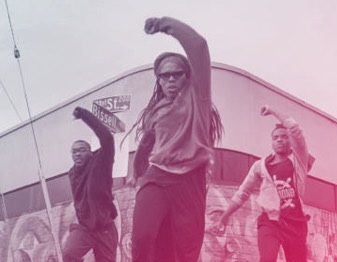Assembled under a programmatic directive, select works in Residency Projects II resonate surprisingly well with one another, suggesting sly curatorial vision or a fluke of consistency and coincidence. The show is the second of two exhibitions featuring projects by Kala’s 2010-2011 Fellowship artists, who were awarded access to Kala’s traditional and digital printmaking equipment. One of the appeals of Residency Projects II is the artists’ diverse usage of this equipment to make sculpture, animation, and photography, as well as traditional prints. The show’s cohesion might be due to the fact that the exhibiting artists are San Francisco locals and alumni of California College of the Arts (CCA). (Residency Projects I included local and international artists of various alma maters.) It is worth noting that the Kala directors selected the Fellows in conjunction with Jens Hoffman, director of the CCA Wattis Institute for Contemporary Arts.1 Whether it’s fair to allege institutional bias or merely assume kinship of taste, the works exude intelligence and confidence.
In a context where many artists employ digital print media, Elisheva Biernoff’s screen prints are strikingly refreshing. Extending her ongoing investigation of landscape, Biernoff presents a staggeringly labor-intensive, twenty-two-color, thirteen-page screen-printed book entitled Long Short Story (2011). The cover depicts a suburban enclave nestled in a riverside alpine meadow. The graphic simplicity of the forms, combination of muted tones and chirpy house colors, and understated American architecture recall nostalgic, idealized print images. This tranquility is humorously upset with a series of natural disasters — cut-out overlays — that afflict the neighborhood in quick succession. The low-slung ranch houses and Cape Cod cottages fall victim to floods, mudslides, asteroids, and sinkholes. Set against majestic snowy peaks, Long Story Short speaks to our paradoxical relationship with nature and the undercurrent of vulnerability in this meteorologically extraordinary year.
Renée Gertler’s bag sculptures attempt to boil down the wonder of sublime nature to a few elements. Gertler photographed and re-constructed found bags — ranging from plastic shopping bags to Goldfish cracker packaging — from laser prints. They are portals in which to view meticulously punched starry skies reflected in plexiglass sheets. Second surface reflective materials occasionally present an undesirable visual stutter, which is the case in a few works here. Wonky construction seems at odds with the ethereal galaxies; nonetheless, the bags compel viewers to duck down to peer at the tiny universes that await them.
Gertler is known primarily for large sculptural installations in basswood; four small black-and-white photographs mark a subtler and more formal direction. Basswood reappears, encrusted with glitter, in Milky Way Model (2011). Dramatic lighting underscores an elemental sensibility, recalling the origins of the medium and associations with the pursuit of knowledge and perceptual limits. LA at Night (2011) is a stunning photograph of a backlit, perforated page. Here, the handmade idiosyncrasies make the photo more endearing, as it offers the pleasure of simultaneous recognition alongside the discovery of seeing something for the first time.

Black Bag: M81-Galaxy, Renée Gertler, 2011; Courtesy of the Artist and Kala Gallery, Berkeley.


